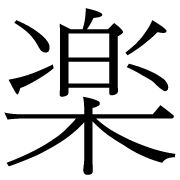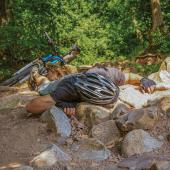Shiatsu, Qi, & The Whole Yin-Yang Thing
How Chinese medicine can help your health.
With the change of seasons comes changes in physical activities—from biking to skiing, raking to shoveling, walking to driving. These changes all too often affect health and wellness. Sore or tired, injured or recovering, Shiatsu can restore balance and energy, allowing you to take full advantage of the beauty and bounty of every season.
Shiatsu, pronounced shee (finger) aht-sue (pressure) is a Japanese technique based on an almost 2,500-year-old Chinese medical practice. Shiatsu uses a combination of pressure, kneading, pulling, tapping, and stretching to promote health and balance.
The concept of yin and yang is probably the single most important theory in traditional Chinese medicine. Yin and yang represent different qualities but are complementary. Think about a mountain: in the morning the yang side of the mountain is warm, red, sunny, and dry. The yin side is cool, brown, shady, and damp. As the sun moves throughout the day, the yin side of the mountain will become yang, and the yang side will become yin. This same phenomenon happens everyday with the human body. For example, when you work out and produce heat (excess yang) your body will balance that act with sweat (yin) to cool your body.
The balance of yin and yang in the body allows for smooth flow of Qi throughout the body. Qi (pronounced “chi”) is energy flowing throughout the body in channels called meridians. The flow of Qi is similar to that of a river—stagnation of the flow of Qi can put your body out of balance, creating a flood in one area and a drought in another. If there is a smooth flow of Qi in the body, there is health; if Qi is weak or stagnant there will be disease.
There are many factors that can disturb the smooth flow of Qi throughout the body: injury, over-exercising, diet, and anger, to name just a few. Balance in our daily lives will balance the yin and yang within, allowing the smooth flow of Qi throughout the body. This will in turn allow smooth movement of blood and body fluids, as well as promote digestion of foods, absorption of nutrients, excretion of waste, the moistening of sinews and bones, and the moistening of skin, which will have resistance to exterior pathogenic factors.
Shiatsu is different from Western massage modalities in that shiatsu is clothes-on, is based on traditional Chinese medicine, uses points along meridians in the body to treat alignments using pressure with the thumbs, and is an entire body massage. When giving a shiatsu the practitioner first treats the entire body and then deals with pathological symptoms locally. The goal is to increase Qi flow, then to remove any roadblocks.
If after a long day of skiing you experience lower back pain, a swollen knee, and overall fatigue, a shiatsu practitioner would most likely start the treatment with you face down and do pressure, kneading, and soothing methods from the head, down the back, and down to the feet—along the way paying attention to specific points which will help with your recovery. A point called spleen nine, which is located on the inside of the knee, is used to alleviate painful obstruction of the knee from dampness (excess yin). Another combination of points the practitioner may use in this case would be bladder channel 31-34—these points lie in a row below the fourth lumbar vertebra. These points used together strengthen the lower back and knees. The overall focus of the session would be not only the particular problems of the knee and back but also the overall body as a whole entity and its ability to repair itself through balance.
Shiatsu increases vitality, stamina, and energy; this increases the fluid movement of Qi, which will lower the occurrence of illness and injury. Continued tension or over-operation of muscles gradually causes accumulation of fatigue-producing elements (lactic acid and carbon dioxide gas) and results in indurations of muscle fibers that will eventually lose their power to contract. Regular massage will improve circulatory and lymphatic functions; this in turn reduces stress and fatigue that accumulates in the body.
Balance in our lives, diet, exercise, work, and emotions will allow the balance of yin and yang and allow a smooth flow of Qi throughout the body. This balance is the essence of traditional Chinese medicine; thus an understanding of how to balance yourself and your yin and yang can help us to avoid rapid swings from one to another and prevent accumulation of fatigue and occurrence of illness.
As with any sport, especially seasonal sports, revisiting the action after a break can bring stress to old injuries or create new ones. Shiatsu is one tool you can use to keep your body healthy with the change of activities that comes with the busy winter season.
For more information about shiatsu or Asian medicine in general, contact [email protected].











